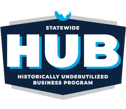In blog #3 of our series about how hospitals are working to meet USP <800> compliance with little to no budget, we’ll share more challenges hospitals have faced as they attempt to piecemeal a homegrown USP <800> hazard communication program together vs. investing in a comprehensive technology solution.
USP <800> Hazardous Drug Communication Program Requirements
USP <800> requires healthcare facilities to establish policies and procedures that ensure worker safety during all aspects of hazardous drug (HD) handling in the form of a Hazardous Drug Communication Plan. As is typical of USP <800>, the format of the plan or how it is executed is left up to the hospital to decide. This allows for each facility to meet the unique needs of its staff and operations but also leaves room for unintentional mistakes and possible noncompliance.
As stated in USP <800>, the Hazard Communication Program must include Standard Operating Procedures (SOPs) to ensure effective training around labeling, transport, storage and disposal of the HDs as well as the use of Safety Data Sheets (SDS). The program must consist of:
- A written plan to communicate how SOPs will be implemented.
- All containers of hazardous chemicals must be labeled, tagged or marked with the identity of the material and appropriate hazard warnings.
- Entities must have an SDS for each hazardous chemical they use in accordance with 29 CFR 1910.1200.
- Facilities must ensure the SDS for each hazardous chemical is readily accessible to personnel during each work shift and when they are in their work area. Note: OSHA exempts final forms of
- FDA-approved drugs from SDS requirements when in the solid final form.
- Healthcare workers who are at risk for hazardous chemical or drug exposure must be trained before beginning work with a hazardous chemical. Ongoing education is required when new HDs or equipment is used. Documentation of this training must be updated every 12 months.
- Healthcare workers of reproductive capability must confirm in writing they understand the risks of handling HDs.
*It is important to note the “musts” in the above section. Check out our informative and popular blog detailing the differences between “Should and Must” for more information.
Again, USP <800> does not specify how the components of the plan must be documented and communicated but only that this information must be available to all healthcare workers who may be exposed to hazardous drugs, whether handling, administering or disposing of the drugs.
As we’ve mentioned throughout the series, many hospitals and healthcare systems still rely on a spreadsheet to document their HD list, the SDSs necessary for specific HD dosage forms, and containment strategies and work practices. Spreadsheets are problematic for many reasons including the resources necessary to create and maintain such a massive and vital document, ensuring everyone who needs access to their vital safety information can, in fact, access it on the job and then the security risks involved in making the spreadsheet available to all who are required access.

An example of an HD SOP spreadsheet.
Now that USP <800> is enforceable, we’ve seen designated persons, medication safety officers and pharmacy directors panicking as they realize that their existing hazardous drug policy spreadsheet is not up to date and will possibly require weeks to update.
One medication safety officer said their organization was struggling with the complexity of managing formulary and non-formulary HDs across multiple facilities such as specialty and retail pharmacy, infusion centers and acute care centers. Manually tracking, assessing and documenting the number of HDs and dosage forms for various types of facilities exponentially complicates the task and creates potential for mistakes and incomplete information.
Even if this information is housed in an electronic health record system (EHR) like Epic, healthcare facilities then are faced with the challenge of making safety information available to healthcare workers who do not have access to the EHR such as receiving and environmental services. One medication safety officer bemoaned the process of integrating changes to drugs and safety policies within their EHR, making it nearly unsustainable and not worth the effort since the information is not available to all who need it.
We are in the process of implementing Rhazdrugs at a regional healthcare system consisting of three hospitals and two cancer centers that employ 5,000 healthcare workers, 3,500 of whom will access HD safety policies in Rhazdrugs. When asked if a homegrown policy solution would be sustainable, the pharmacy director said emphatically, “No, because there are constantly new drugs coming out. It’s definitely not a one-and-done. It's gonna take some maintenance and someone has to keep up with it on a continuing basis.”
Another large healthcare system initially opted to try its hand at piecing together a homegrown answer to the USP <800> Hazard Communication Plan requirements. They said the process of manually documenting and updating their HD list and policies felt as futile as Groundhog Day because they could not see the light at the end of the tunnel in this ongoing tedious process.
After giving the manual process a go, this large and growing healthcare system returned to us asking for a cloud-based system that is easy to access, secure and provides auto-update capabilities, not to mention the support of the Rpharmy team.
They say now they feel confident that their HD and safety information is correct and don’t feel weighed down by the neverending daunting task of manually updating their system.

Rhazdrugs offers an alternative to the spreadsheet, clearly communicating containment strategies in an easy-to-read and accessible format.
The previously mentioned system of two hospitals and three cancer centers also realized the time-saving benefit of working with the Rpharmy team, who, in a short time, was able to set up their Rhazdrugs site and begin updating it with their system-specific safe handling policies. While they haven’t rolled it out to nurses and healthcare workers yet, the pharmacy director said, “The work we need to do is nothing like if we had to start from scratch so we’re months ahead of where we would have been if we tried to build a solution on our own.”
If you and your team are at your wit's end and facing the possibility of non-compliance citations or dangerous hazardous drug exposure, we would love to speak with you about how a cloud-based, user-friendly medication safety platform could help ensure USP <*00> compliance while improving the safety of healthcare workers.
In the meantime, check out our Hazardous Drugs Resource page chock full of helpful resources like a sample SBAR, links to outside resources from NIOSH and ASHRM and more. Drop us an email if you’d like to learn more: info@rpharmy.com.


